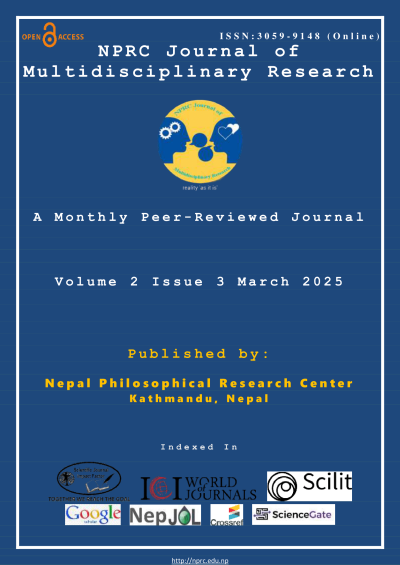Employee Engagement in the Digital Age: Strategies for Building a Motivated Workforce
DOI:
https://doi.org/10.3126/nprcjmr.v2i3.76963Keywords:
Employee Engagement, Digital Transformation, Motivation, Workplace Strategies, Employee SatisfactionAbstract
Employee engagement has become a critical factor for organizational success in the digital age. Rapid technological advancements, including artificial intelligence, automation, and remote work platforms, have transformed the nature of work and the way employees interact with their organizations. This study explores strategies for enhancing employee engagement in the digital era, focusing on the integration of digital tools, flexible work environments, and data-driven insights. It examines how digital communication platforms, performance management software, and AI-powered feedback mechanisms contribute to building a motivated and engaged workforce. The study also investigates the role of leadership in fostering a culture of trust, recognition, and continuous learning in a hybrid work environment. Furthermore, it highlights the challenges of digital overload, work-life balance issues, and employee burnout, offering actionable strategies for addressing these concerns. The research draws on case studies and empirical data to identify best practices in digital engagement, including personalized employee experiences, gamification, and real-time feedback. The findings suggest that organizations that successfully implement digital engagement strategies experience higher employee satisfaction, increased productivity, and reduced turnover rates. This study provides valuable insights for HR professionals and business leaders seeking to enhance employee motivation and commitment in a rapidly evolving digital landscape. By aligning technological advancements with human-centric approaches, organizations can create a balanced and engaged workforce, driving long-term success and competitive advantage.
Downloads
Downloads
Published
How to Cite
Issue
Section
License
Copyright (c) 2025 The Author(s)

This work is licensed under a Creative Commons Attribution-NonCommercial 4.0 International License.
This license enables reusers to distribute, remix, adapt, and build upon the material in any medium or format for noncommercial purposes only, and only so long as attribution is given to the creator.





